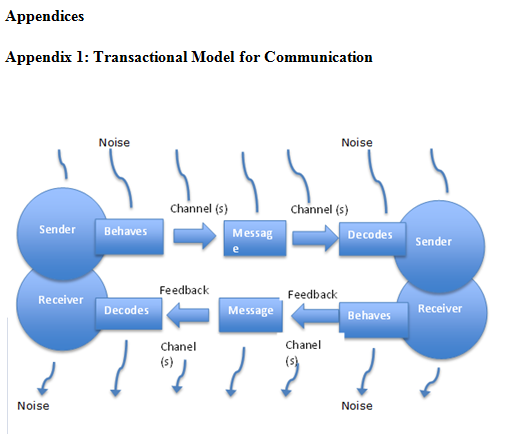Geo-soft Inc.: Leading Across Cultures Case Solution
The Coca Cola Company also uses the same communication model (See Appendix 2). Specifically the company follows stakeholder analysis in order to understand the needs and wants of each stakeholder involved in the communication process. The company has a decentralized organization structure with authority given to international operations of the company (See Appendix 3). The analysis usually involves a detailed analysis of the customers (above 18) and the employees of the company. Further, the company also conducts interviews from its customers, government agencies and media. The corporate reputation of a company is vital in achieving success; however, mismanagement of information and ineffective communication with the employees can lead to vulnerable organization position. However, Coco Cola has managed its communication system smooth by catering to the specific needs of the customers and the employees as well as the other stakeholders.
1.Cross Cultural and Intercultural Communication Frameworks
In order to keep the Digital Intimacy strategy, the company needs to adopt a suitable cross cultural and intercultural framework for communication. Hofstede’s six dimensions provide a good understanding of the needs of the individuals or communities from different cultural backgrounds, norms and values. According to Hofstede, the cultures have 6 different dimensions (See Appendix 4) which are as under
·Power Distance Index
This dimension shows how much individuals are willing to accept inequality. A high PDI shows that the society or a cultural accepts authority and inequality however allow PDI society prefer decentralization. Organizations with high PDI are more centralized with complex organizational hierarchies and there exists large gaps in communication and respect. On the other side, a low PDI organization come up with flat organization structures, whereby the managers and the employees are considered equal in the organization.
·Individualism v/s Collectivism
This dimension refers to the strength of relationships with other individuals in the community. People with high individualism have weak ties with the community. They prefer privacy, individual rewards and tasks and take less responsibility for the others’ actions. However, people with a collectivist dimension have strong ties with the community. They prefer socialism, group rewards and take responsibility for other’s outcomes.
·Masculinity v/s Femininity
This dimension refers to the preference of societies towards male and female roles. Cultures with masculinity dimension tend to be ego centered and focus on money and achievement. However, cultures with femininity dimension tend to relationship oriented and focus on the quality of life.
·Uncertainty Avoidance Index
This dimension refers to the ability of people in coping up with uncertainty or complex situations. Cultures with high UAI are not open towards change and are more expressive towards the urgency of the change. While, cultures with low UAI are more open towards change and feel the less sense of urgency.
·Long v/s Short Term Orientation
It refers to the time horizon perspective of individuals within a culture. People with a long term view tend to be more pragmatists while people in a short term orientation tend to focus consistency and principles.
·Indulgence v/s Restraint
It refers to the freedom level within a culture. The cultures with more focus on indulgence tend to have a optimistic view, focus on personal happiness and believe in freedom of speech. However, cultures with restraint focus tend be more pessimistic and prefer a rigid and a followed behavior.
Another framework for intercultural communication has been given by Anna Rogala in 2011 (See Appendix 5). According to the model communication process not involves the cultural dimensions but it encounters the cross cultural communication competencies and the multicultural team performance measures.
From the both frameworks of intercultural communication, the Hofstede’s model seem more useful keeping in consideration the value driven culture at Geo-soft. It is because the company focuses on generating customized solutions for its customers by keeping sound global communication level within the organization and to maintain a smooth communication levels, the company needs to understand the natures, beliefs, values and cultural differences among its customers and employees working in different regions of the world. To understand the stakeholders from cultural perspective and developing a communication framework for achieving a healthy environment requires the adoption of Hofstede’s dimensions.
2.Communication with Primary Stakeholders
Geosoft’s distinct corporate culture helps the communications with its primary stakeholders because it is very general thing that when company thinks about their employees and keep them motivated, then they always support company to deal with its primary stakeholder. When employees are well engaged in the company then they will deal with customers with care and friendly, they will ensure best services for the customers because they have been treated well. When employees collaborate with the company matters, then they will understand the government involvement in the organization and will also be able to understand government involvement and how to handle the government changes like policies and taxes, especially in operating different countries. Employees are assets for the organization because company invests in their employees and in future employees will pay them back by considering them company as their own and doing efforts for the company. Motivated employees will work hard to make life easy for the company and will also do their honest efforts to create positive image of the company. We can say that it is a two way process where company care and recognize their employees and the employees then deals with customers, government and partners with care and will own the company. Primary stakeholders are very important part of company and if company wants to create balance between culture and primary partners then it is very effective and helpful.
.......................
Geo-soft Inc. Leading Across Cultures Case Solution
This is just a sample partial case solution. Please place the order on the website to order your own originally done case solution.














